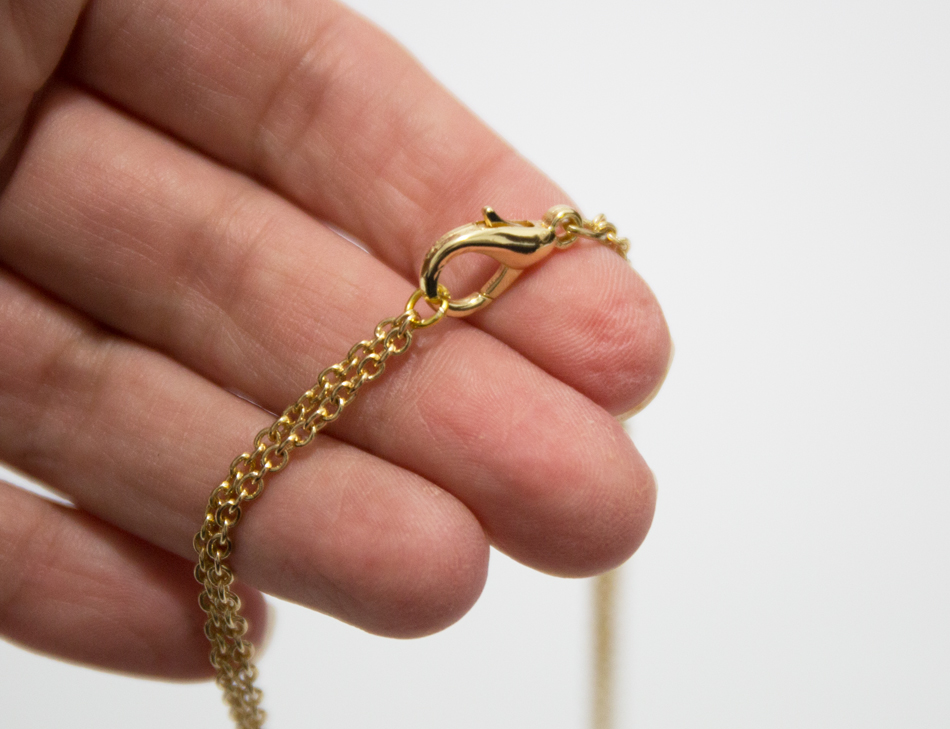Necklaces, delicate adornments that grace our necks, often hold sentimental value and adorn cherished memories. However, even the sturdiest necklaces can succumb to the relentless forces of daily wear or unforeseen accidents, leaving us with broken chains and shattered dreams. Fortunately, with a little know-how and a steady hand, mending a broken necklace is a task that can be accomplished at home, restoring beloved pieces to their former glory and preserving priceless mementos.

Image: thenoblewife.blogspot.com
Before embarking on this restorative journey, it is essential to assess the extent of the damage. Different types of necklaces and clasps require varying approaches, and identifying the specific nature of the breakage is the first step towards effective repair. Once the damage has been identified, gather your repair tools, which may include pliers, wire cutters, jump rings, and a clasp. With the necessary tools at your disposal, let us delve into the art of necklace repair, empowering you to revive cherished adornments and extend their lifespan.
Understanding Necklace Construction: Layering Knowledge for Restoration
To mend a broken necklace effectively, it is crucial to understand its construction. Necklaces typically comprise a chain, a clasp, and embellishments such as pendants or beads. Chains, the foundational element that holds the necklace together, come in various styles, including cable chains, curb chains, and rolo chains. Knowing the type of chain can guide us in selecting the appropriate repair method.
Clasps, the unsung heroes of necklaces, ensure a secure fit and prevent accidental detachments. Common clasp types include lobster claw clasps, toggle clasps, and barrel clasps. Each clasp design has its own unique mechanism, and understanding its operation is fundamental for successful repair.
Addressing Chain Breaks: Separating, Rejoining, and Strengthening
Chain breaks, manifesting as gaps or disconnections along the chain, are one of the most prevalent necklace ailments. Addressing chain breaks requires meticulous care and attention to detail. Begin by using wire cutters to snip off any frayed or damaged portions of the chain, creating clean ends. Next, use a pair of pliers to gently open a jump ring, a small metal loop that serves as a connector. Insert the two chain ends into the jump ring and gently squeeze the ring closed using pliers, ensuring a secure hold.
To fortify the repair and minimize the risk of future breakage, consider using two jump rings, one nested inside the other. Repeat this process for any additional breaks in the chain.
Conquering Clasp Malfunctions: From Loose to Secure
Clasp malfunctions, often characterized by difficulty in opening or closing, can be equally frustrating. Loose or misaligned clasps can lead to accidental detachments, potentially resulting in the loss of the necklace and its precious adornments. To mend a loose clasp, employ a pair of pliers to gently squeeze the clasp’s components closer together, restoring their grip. For misaligned clasps, carefully adjust the position of the components using pliers, ensuring proper alignment for a secure fit.
Broken clasps, however, require more extensive repair or replacement. If the clasp is beyond repair, select a replacement clasp that matches the style and size of the original. Remove the old clasp by snipping it off using wire cutters and attach the new clasp by opening a jump ring, inserting both ends of the chain, and securely closing the jump ring.

Image: www.simplesimonandco.com
Securing Embellishments: Preserving Charms and Pendants
Embellishments, such as charms, pendants, or beads, add character and individuality to necklaces. However, they can sometimes become detached due to loose connections or broken jump rings. To reattach a detached embellishment, simply follow the steps outlined in the “Addressing Chain Breaks” section to connect it using a jump ring.
Loose connections between embellishments and the chain can be tightened by gently squeezing the jump ring with pliers, ensuring a secure hold. If the jump ring is damaged or enlarged, replace it with a new one to prevent future detachments.
How To Fix A Broken Necklace
Preventive Measures: Safeguarding Necklaces from Breakage
Prevention, as the adage goes, is better than cure. By implementing simple preventive measures, you can minimize the risk of necklace breakage and extend the lifespan of your treasured adornments. Store necklaces carefully in a protective case or pouch, preventing tangles and accidental damage. When wearing necklaces, avoid exposing them to excessive force or strenuous activities that could strain the chain or clasp.
Regularly inspect necklaces for signs of wear and tear, such as loose connections or weakened jump rings. Promptly addressing any identified issues can prevent minor problems from escalating into major breakages. Additionally, consider visiting a jeweler periodically for professional cleaning and maintenance, ensuring the optimal health of your necklaces.
Repairing a broken necklace is a rewarding endeavor that combines artistry and practicality. By understanding the construction of necklaces, identifying the type of damage, and implementing the appropriate repair techniques, you can restore your beloved adornments to their former glory. With a commitment to preventive measures, you can safeguard your necklaces from future breakages, ensuring their continued presence as treasured companions and evocative reminders of cherished moments.